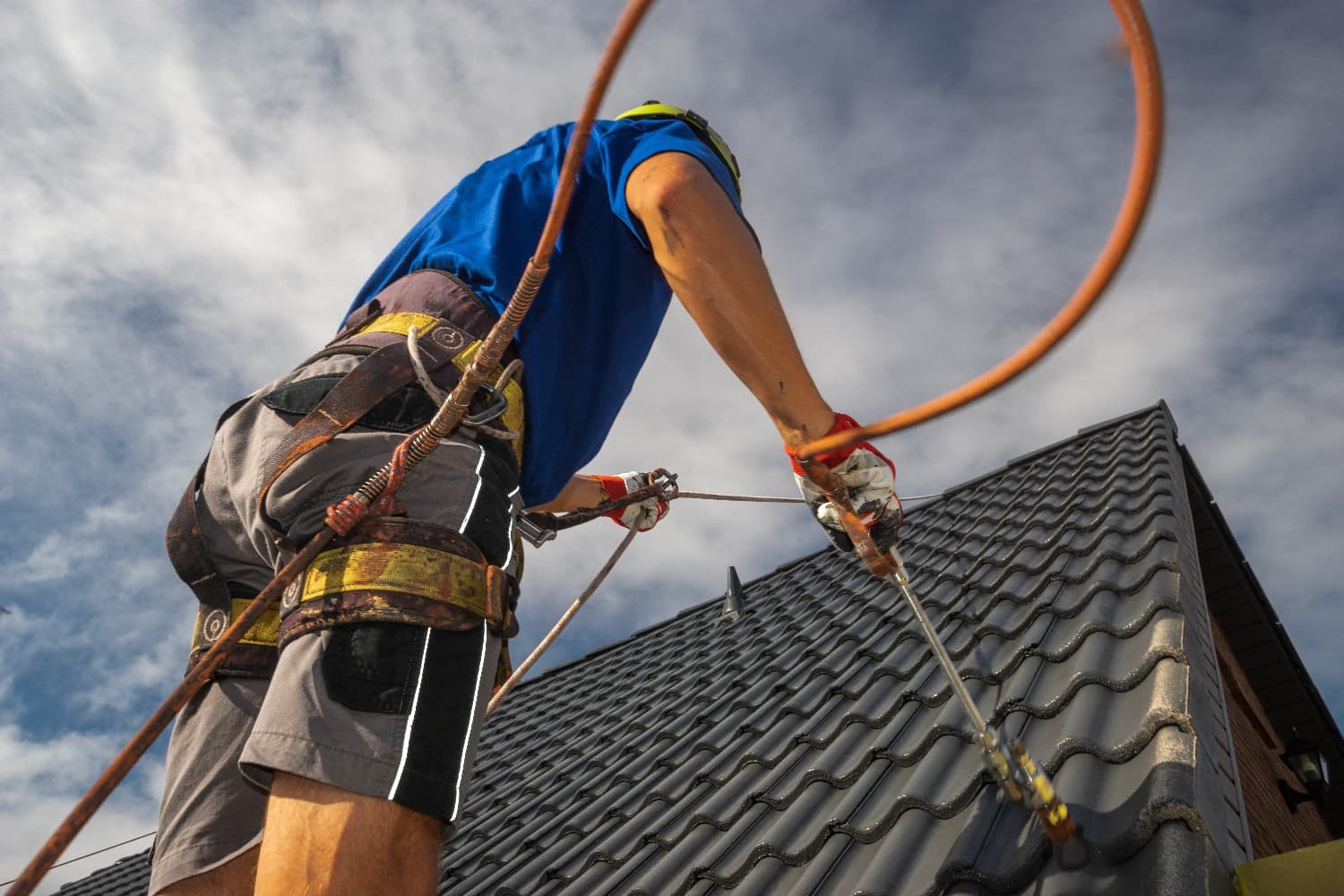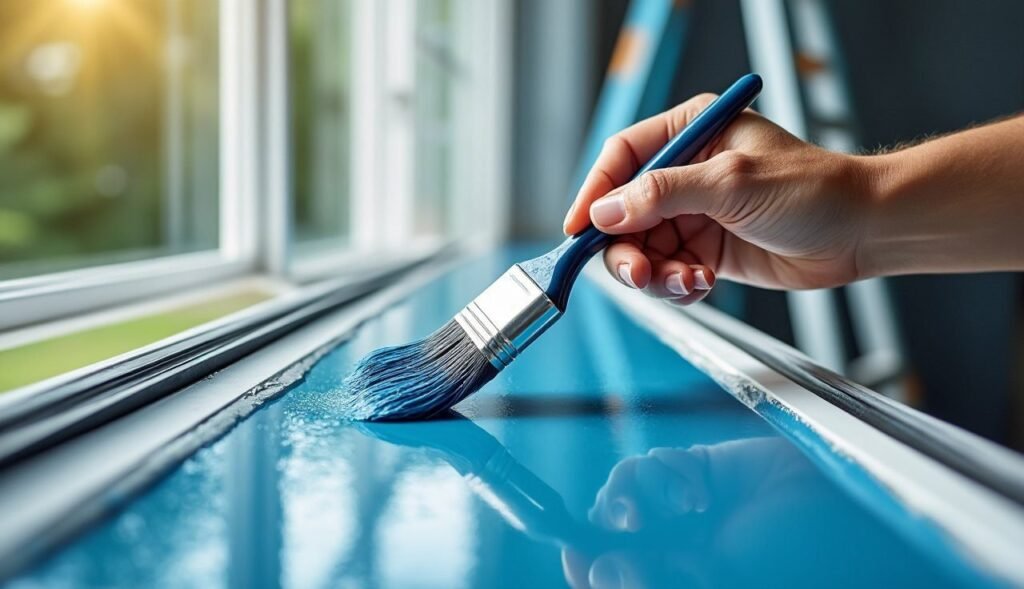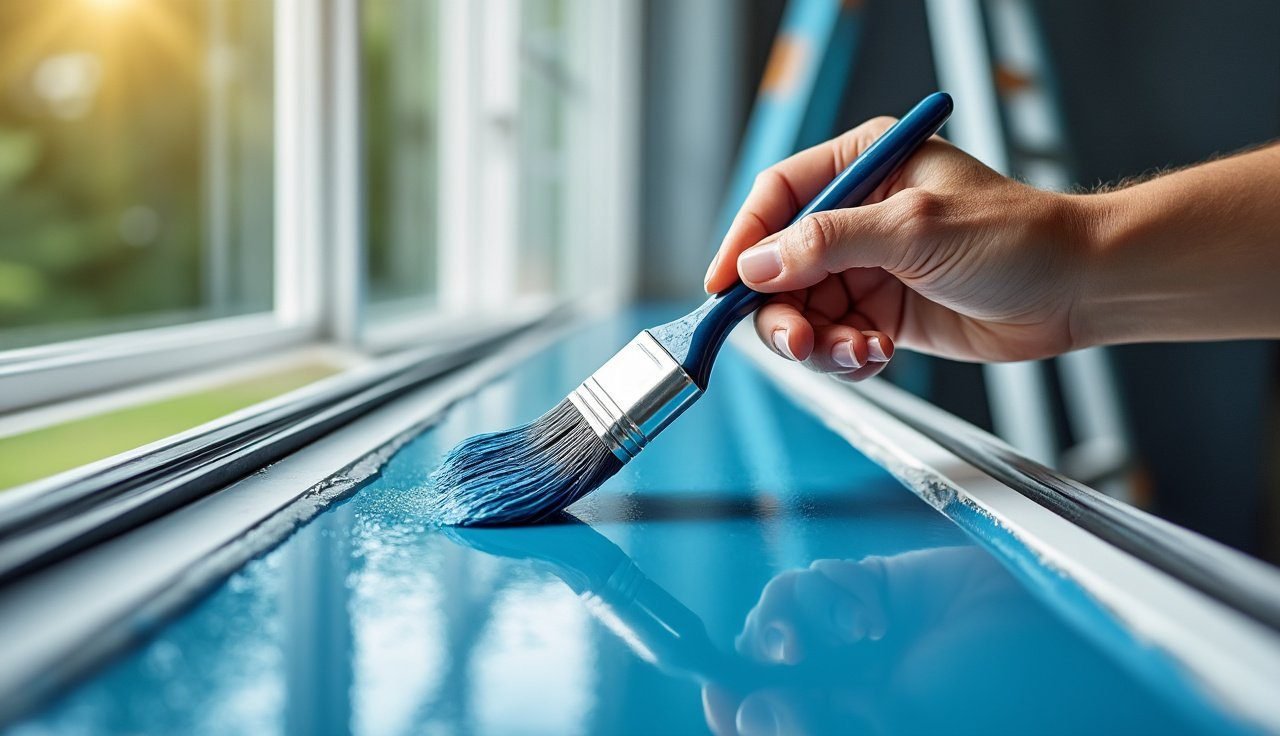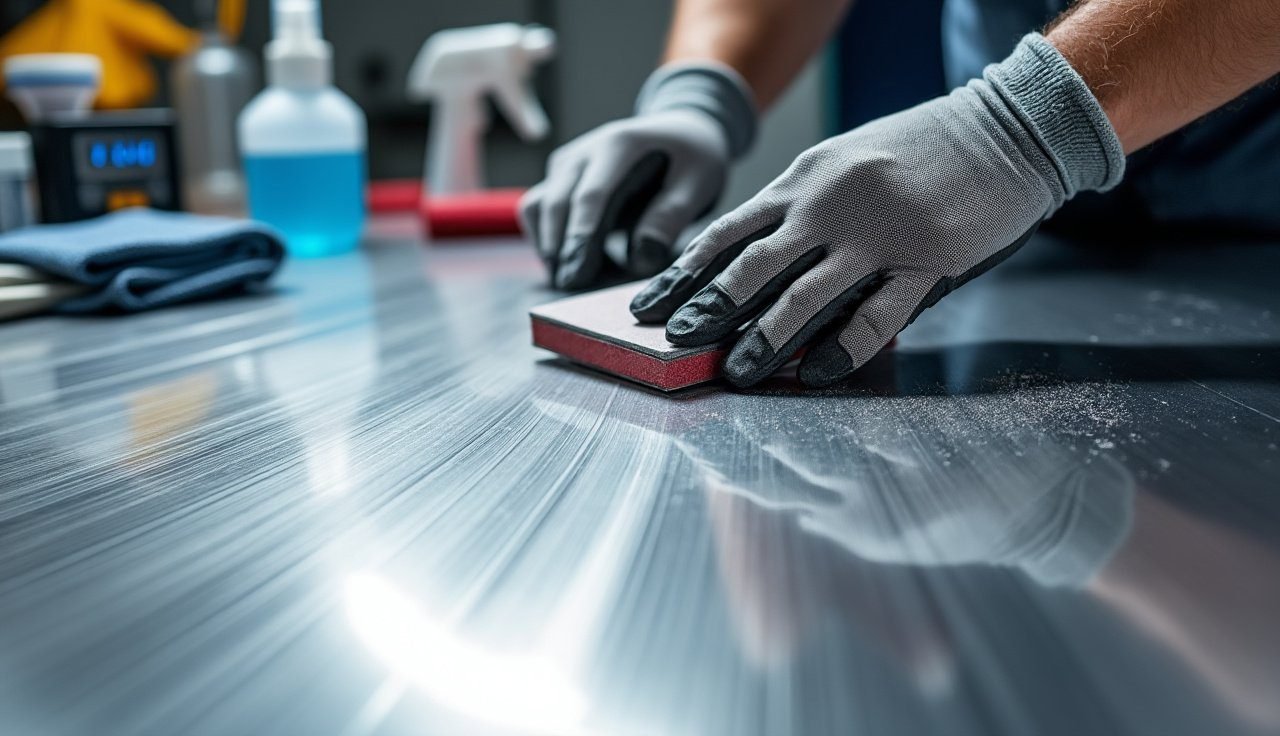When it comes to exterior home improvement, aluminum surfaces such as siding, gutters, and fascia are often painted for added curb appeal and protection. However, if not done correctly, you may notice the frustrating problem of paint peeling on aluminum—something many Miami homeowners face due to the city’s humidity and salt air.
Whether you’re a DIYer or planning to hire a professional, this guide will help you keep your aluminum paint job looking sharp and long-lasting.
Choosing the Right Paint for Aluminum Matte or Satin Finish
Before picking up a brush, one of the first decisions you need to make is the type of finish you want. Should you go matte, satin, or gloss?
- Matte finish: Offers a non-reflective, muted appearance that effectively conceals surface imperfections. Ideal for older or worn aluminum siding, matte also helps minimize light glare.
- Satin finish: Provides a subtle sheen with enhanced durability. It’s a favorite among professionals for aluminum fascia paint peeling prevention because it strikes a balance between visual appeal and surface protection.
Both finishes work well on aluminum, but the key is using acrylic latex paint specifically formulated for metal surfaces. Matte may work better for achieving a vintage aesthetic, while satin is usually recommended for higher-traffic or exposed areas where moisture and sun damage are concerns.
Pair your finish choice with a high-quality bonding primer to improve adhesion and longevity. Selecting the right paint isn’t just about color or finish—understanding the various types of paint for aluminum helps ensure durability and resistance to peeling in harsh climates, such as Miami’s coastal environment.
Do’s and Don’ts for Painting Aluminum Surfaces
Do:
- Clean thoroughly with a degreaser and rinse well.
- Sand lightly to create a grippy surface.
- Apply a bonding primer designed for aluminum.
- Use exterior-grade paint with UV and moisture resistance.
Don’t:
- Skip prep steps—especially cleaning and priming.
- Use oil-based paints directly on aluminum (they tend to peel).
- Paint in high humidity or when exposed to direct sunlight.
- Apply thick coats expecting better durability—it causes flaking.
Following these basic dos and don’ts can eliminate 90% of common causes of peeling paint.
Painting Aluminum Siding: An Easy Guide
Want to repaint faded or chipping siding? Here’s a step-by-step guide to help you get it right:
- Inspect the Siding: Check for dents, corrosion, or chalking. Structural damage should be repaired before painting.
- Clean the Surface: Use a solution of TSP (trisodium phosphate) or a TSP alternative to remove grime, mildew, and oxidation. Rinse thoroughly and allow to dry.
- Sand for Adhesion: Use 180- to 220-grit sandpaper to lightly roughen the surface. This helps the primer grip better.
- Apply a Bonding Primer: Choose a high-adhesion primer specifically made for metal or aluminum surfaces.
- Paint with the Right Tools: Use a sprayer for smooth, even coverage or a high-quality roller for large flat areas. Apply two thin coats, allowing sufficient drying time between each.
- Consider a Topcoat: For additional gloss or protection, apply a clear, UV-resistant sealant.
If you’re wondering how to fix peeling paint on aluminum siding, this process will restore the appearance and protection of your home. You can also explore aluminum surfaces for painting for additional guidance.
What Type of Paint Should You Use For Aluminum?
The best paint options for aluminum include:
- 100% Acrylic Latex Paint: Flexible, durable, and UV-resistant. Best for siding and gutters. It resists fading and mildew, which is essential for humid environments like Miami.
- Direct-to-Metal (DTM) Paint: Contains rust inhibitors and adheres well to non-primed surfaces. It’s a time-saving solution that works particularly well on clean, sanded aluminum.
- Elastomeric Coating: Great for areas with temperature fluctuations. It can bridge small surface cracks and provide a waterproof barrier, especially useful for older aluminum that has expanded or contracted with age.
When selecting a paint, make sure it’s labeled for use on aluminum or metal and has excellent resistance to UV rays, moisture, and salt spray. These factors are critical for any successful exterior paint job in Miami’s coastal climate, making it even more important to follow a detailed guide on painting aluminum that covers everything from surface preparation to finishing techniques.
7 Tips to Prevent Paint Peeling on Aluminum Surfaces
- Clean Thoroughly: Dirt, mold, and grease create adhesion issues. Use a degreasing cleaner, scrub all areas with a soft brush, and rinse thoroughly. Even small traces of residue can interfere with primer and paint.
- Etch or Sand the Surface: Sanding with 180- to 220-grit sandpaper helps create a rough surface for the primer to bond with. In some cases, etching with a mild acid solution (phosphoric acid-based) can further enhance bonding.
- Use a Bonding Primer: Regular primers often fail on aluminum. Choose a bonding primer labeled for use on metal or aluminum. These primers create a chemical bond with the surface, improving adhesion and preventing premature peeling.
- Avoid Painting in Humid Weather: Moisture in the air can prevent both primer and paint from curing properly, increasing the risk of peeling. Aim for dry days with humidity below 60%, especially during Miami’s winter and early spring months.
- Apply Thin, Even Coats: Thick coats are more likely to crack and peel over time. Applying two to three thin coats, with proper dry time between each, provides better flexibility and durability.
- Allow Adequate Dry Time: Always follow manufacturer recommendations. Rushing between coats can trap moisture or solvents, weakening adhesion. Ensure each coat is completely dry before applying the next one.
- Inspect and Touch Up Annually: Regular inspections allow you to catch chips, scratches, or early signs of peeling. Prompt touch-ups prevent moisture from getting underneath the paint and causing larger areas to fail.
Choosing a Painting Contractor In Miami for Your Aluminum Painting Project
Living in Miami means dealing with a tropical climate that tests even the best paint jobs. A seasoned local painting contractor will understand how to:
- Prep for humid and salty air conditions
- Use paints rated for Florida’s climate.
- Choose primers that prevent aluminum fascia paint peeling.
Always ask your contractor about their past aluminum painting projects, warranties, and whether they use bonding primers. For areas like window trims or frames where precision is key, many homeowners rely on professional services with experience in painting aluminum windows—especially when dealing with tight edges and exposure to elements.
Common Questions When Painting Aluminum Surfaces in Miami
What is the difference between flaking and peeling paint?
Flaking means the paint is lifting in small pieces, while peeling involves larger sections coming off—often from poor adhesion or moisture.Understanding the difference between flaking and peeling is key to choosing the right fix. Proper surface prep can help address issues like poor adhesion and moisture buildup—both of which contribute to flaking. For lasting results, it’s worth exploring how to fix flaking paint, especially if you’re dealing with metal or outdoor surfaces.
Why does paint peel off aluminum?
It’s usually due to improper prep, especially skipping cleaning or priming, or painting in high humidity.
How do you fix peeling paint on aluminum?
Scrape the loose paint, sand the area, clean it, apply primer, and repaint. Follow the process outlined above.
Does vinegar remove paint from aluminum?
Vinegar can soften paint but won’t strip it entirely. Use it for cleaning before sanding.
How do you get paint to stick to aluminum?
Use a proper bonding primer after sanding. Acrylic latex paint designed for metal ensures better adhesion.
Should You Leave Aluminum Painting to the Pros?
If you’re unsure about surface prep, primer selection, or dealing with peeling paint on second-story siding, hiring a professional can save you time, money, and hassle.
Professional painters bring the right tools, product knowledge, and climate-specific expertise—especially important for Miami homeowners. Whether it’s gutters, fascia, or complete siding restoration, they ensure the paint sticks and stays beautiful for years.
Want help with your aluminum painting project? Reach out to a Miami-based pro who understands local climate conditions and offers long-lasting solutions.




